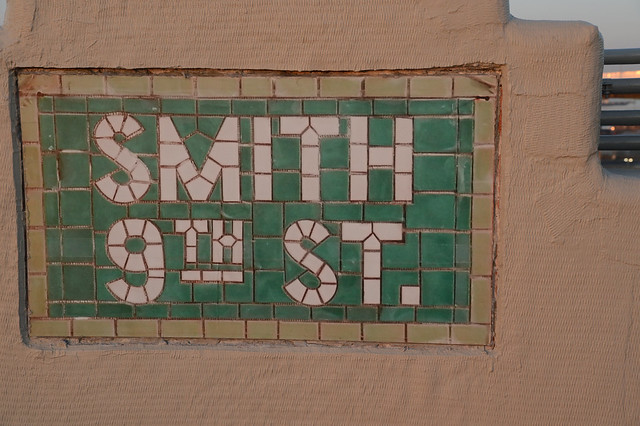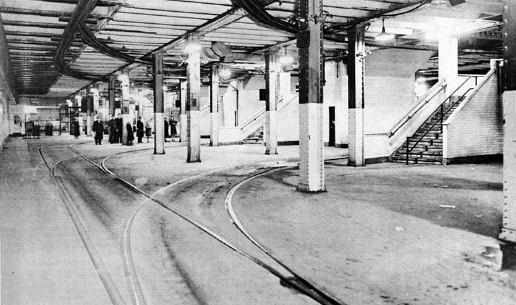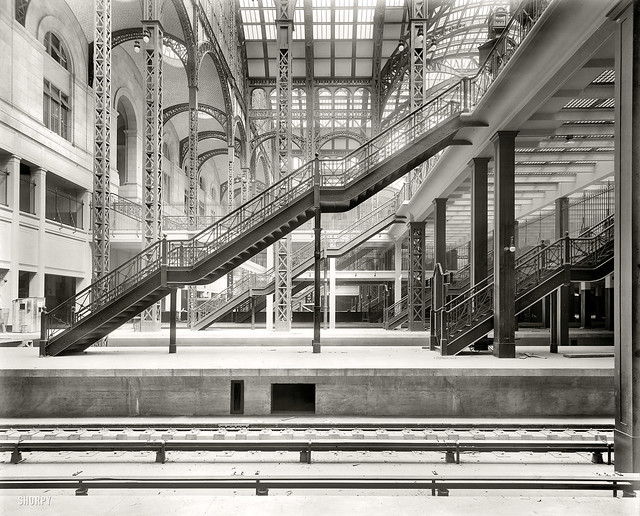It’s time for a nice, relaxing three-day weekend. Unfortunately, the weather doesn’t plan on cooperating this weekend, and some of the subway routing isn’t much better. Despite local protests, the MTA has gone ahead with the Memorial Day weekend L train shutdown. From tonight through Tuesday morning, there will be no L trains between Lorimer St. and 8th Avenue. The M will run, but that’s hardly a comforting thought (especially without a transfer between the G and M/J).
Meanwhile, trains that are running will operate on a Sunday schedule for the Monday holiday. Beware, tough, as some of these service changes last through Monday as well. Here’s everything:

From 3:45 a.m. Saturday, May 25 to 10 p.m. Monday, May 27, 2 service operates in two sections due to track panel installation north of Gun Hill Road:
- Between Flatbush Avenue and East 180th Street*
- Between East 180th Street and 241st Street
*2 trains from Flatbush Avenue are rerouted to Dyre Avenue at East 180th Street during this time.

From 5:45 a.m. to 6 p.m., Sunday, May 26, downtown (Brooklyn-bound) 4 trains skip 176th Street, Mt. Eden Avenue, 170th Street, 167th Street and 161st Street due to rail and tie renewal south of 170th Street.

From 3:45 a.m. Saturday, May 25 to 10 p.m. Monday, May 27, 5 service is suspended due to track panel installation north of Gun Hill Road. Customers may take the 2 and/or 4 instead. For service between:
- Dyre Avenue and 149th Street-Grand Concourse, take the 2 instead (the 2 operates between Dyre Avenue ad Flatbush Avenue during this time.)
- 149th Street-Grand Concourse and Bowling Green, take the 4 instead.

From 11:45 p.m. Friday, May 24 to 6:30 a.m. Saturday, May 25, from 11:45 p.m. Saturday, May 25 to 6:30 a.m. Sunday, May 26, from 11:45 p.m. Sunday, May 26 to 6:30 a.m. Monday, May 27, and from 11:45 p.m. Monday, May 27 to 5 a.m. Tuesday, May 28, downtown (Queens-bound) A trains run express from 59th Street-Columbus Circle to Canal Street due to track tie block renewal north of Spring Street.

From 6:30 a.m. to 11 p.m., Saturday, May 25, Sunday, May 26 and Monday, May 27, downtown (Brooklyn-bound) C trains run express from 59th Street-Columbus Circle to Canal Street due to track tie block renewal north of Spring Street.

From 11:45 p.m. Friday, May 24 to 5 a.m. Monday, May 27, 205th Street-bound D trains run express from 145th Street to Tremont Avenue due to prep work on the Concourse line for upcoming Fastrack maintenance.

From 11:45 p.m. Friday, May 24 to 5 a.m. Tuesday, May 28, World Trade Center-bound E trains run express from 34th Street to Canal Street due to track tie block renewal north of Spring Street.

From 9:45 p.m. Friday, May 24 to 5 a.m. Tuesday, May 28, Jamaica-bound F trains are rerouted via the M line from 47th-50th Sts to Queens Plaza due to station work at Lexington Avenue-63rd Street for Second Avenue Subway project.

From 11:30 p.m. Friday, May 24 to 5 a.m. Tuesday, May 28, there is no L train service between 8th Avenue and Lorimer Street due to pump plant replacement south of 3rd Avenue. L service operates between Rockaway Parkway and Lorimer Street. The F, J, M, M14 bus and free shuttle bus provide alternate service. For service between Manhattan and Brooklyn, customers may use the J or M. For service between 8th Avenue and 1st Avenue, use the M14 bus.

From 6 a.m. to midnight, Saturday, May 25 and from 8 a.m. to 11 p.m. Sunday, May 26 and Monday May 27, M trains run to and from 57th Street-6th Avenue F station to augment service between Manhattan and Brooklyn due to L suspension. (Note: At all times until late August 2013, M trains bypass Central Avenue in both directions due to station rehabilitation work at Central Avenue.)

From 11:45 p.m. Friday, May 24 to 6:30 a.m. Saturday, May 25, from 11:45 p.m. Saturday, May 25 to 6:30 a.m. Sunday, May 26, from 11:45 p.m. Sunday, May 26 to 6:30 a.m. Monday, May 27, and from 11:45 p.m. Monday, May 27 to 5 a.m. Tuesday, May 28, Brooklyn-bound N trains are rerouted via the Q line from Canal Street to DeKalb Avenue due to station painting at Jay Street-MetroTech and work in the Montague tube.

From 6:30 a.m. to 11 p.m., Saturday, May 25, Sunday, May 26 and Monday, May 27, Brooklyn-bound R trains are rerouted via the Q line from Canal Street to DeKalb Avenue due to station painting at Jay Street-MetroTech and work in the Montague tube. There are no Brooklyn-bound N or R trains at City Hall, Cortlandt Street, Rector Street, Whitehall Street, Court Street or Jay Street-MetroTech. Customers may use the 4, A or F trains at nearby stations.




